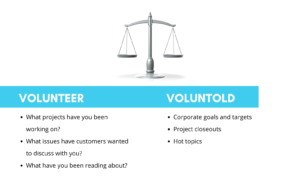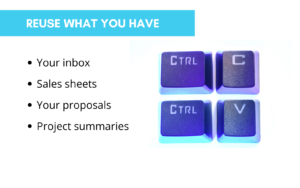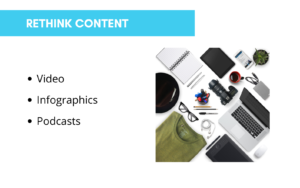Rivergate Marketing was featured in a CSIA webinar where we shared our top six tips for motivating engineers to create content pieces that will ultimately lead to better brand awareness and expertise exposure for your company. The webinar was hosted by CSIA’s Tony Veroeven and has since also been published on the CSIA podcast, Talking Industrial Automation.
Control System Integrators Association (CSIA) is a not-for-profit, global trade association that seeks to advance the industry of control system integration. Control system integrators use their engineering, technical and business skills to help manufacturers and others automate their industrial equipment and systems. CSIA helps members improve their business skills, provides a forum to share industry expertise and promotes the benefits of hiring CSIA members and certified control system integrators. CSIA has over 500 member companies in 35 countries.
Content is one of the most important digital marketing tools that engineering companies have today. Just one article on the success of a major project can lead to many more of the same kind, with the right eyes on it. On the surface, content creation may seem simple. However, in the world of engineering, content creation can be challenging. Asking an engineer to write when they very well may have chosen that career so that they don’t have to can seem overbearing. On top of that, it’s not always easy to find both the time and right topics to do so.
We are here to tell you that content creation doesn’t have to be difficult with the right tools and strategies- even for engineers! In this blog post, Rivergate Marketing shares top tips for overcoming these challenges- the three Ts and the three R’s- starting with time.
1. Time
Without setting aside time dedicated to writing content, it’s easy to let it fall to the back burner and never be done. To solve this problem, what we’ve done with a number of our clients is blog lunches. It’s on the calendar, it’s once a month, and it’s food. Everyone loves food! Once a month, we gather around a conference table for lunch and discuss what we’re going to talk about in our next pieces of content. People bring their laptops and start to write in the same meeting. These blog lunches are a great way to help make content writing a priority on a consistent basis without causing too much disruption to the daily responsibilities of your engineers.
2. Topics
A second hurdle we often see for our clients is topic generation. So, you are in the blog lunch, have your pizza, but then how do you actually come up with topics? Who’s going to be the first one to stop staring at their pizza, and volunteer? We recommend having a balance of ‘volunteer‘ topics and ‘volun-told‘ topics. Volunteer topics are best generated by asking questions that may spark an idea for a piece. Here are some examples:
- Is there a project summary you want to write about?

- Are there issues that customers have wanted to talk to you about? Was there somebody on site who pulled you aside?
- Did you recently get a question via email or phone call? Do you seem to keep getting those?
- What have you been reading about?
- What have you been listening to in podcasts?
- What have you been seeing at trade shows?
It is also good to have some ‘volun-told’ topics. If you have corporate goals that are to get more robotics projects, or you have corporate goals that are to expand in a particular industry, then you might say, ‘I need somebody to write something about robotics,’ or ‘I need somebody to write something about food and beverage or someone who has an idea for a piece that would speak to one of these topics.’ Another thing that we do is take the list of recent project closeouts, bring those to the blog meeting and ask, ‘Is there anything that we can write about here?’ That will get some ideas flowing.
3. Transcribe
For some people, the most challenging part of creating content can be the physical writing of it. Engineers may know what they want to write about, they can talk to you about it all day long and when they sit down in front of their computer, they go completely blank.
One of the ways we have been able to help our clients and their employees overcome this challenge is through recorded meetings. We set aside time to interview the contributors and record the conversation. We then use a transcription service to put those words to paper. Once the ideas and words are on paper, it is much easier to edit the information to make a complete piece of content.
4. Reuse What You Have
Often, your engineers actually already have written, they just haven’t written for a blog post. Have your engineers answered frequently asked questions via email for your customers? Have they written project summaries for their customers at the end of a project? You can take that information and turn it into a blog post or case study. Maybe you have to add a few more sentences or change the tone so that it’s more external than internal, but the information is right there.
Other great resources to grab information for content are sales sheets and proposals. The information t hat you might be giving on your sales sheets and your proposals is the kind of information that you might want to share on your website. It could help them make a decision. The information from these resources can be copied and pasted directly to a new document and then put in a different format. You may want to expand upon the information a bit, change the tone, and add a few images.
hat you might be giving on your sales sheets and your proposals is the kind of information that you might want to share on your website. It could help them make a decision. The information from these resources can be copied and pasted directly to a new document and then put in a different format. You may want to expand upon the information a bit, change the tone, and add a few images.
Learn more about how to reuse content here.
5. Recurring Topics
This tip goes hand-in-hand with having time set aside to create content. Having recurring types of content helps your team know when to prioritize content writing and what to write about. For example, most of our clients have a monthly or quarterly newsletter, which can be a good motivator for your engineers to write. It’s a very similar format and pattern each newsletter cycle.
Recurring content could also be something as simple as publishing answers to customer questions on a consistent basis. CSIA’s Tony Veroeven shares his thoughts on this idea saying, “You get a question either through your website or maybe you hear it all the time when you’re sitting in front of a prospective customer. Tackle that. Listen for that sort of thing. And then put that answer out there on LinkedIn, your website or on a weekly blog. Or, do it on video. Grab your phone, answer the question in person and put it on your YouTube channel.”
Tony uses Gary Stern of Canary Labs as a great example. He answers frequently asked questions on LinkedIn on a consistent basis using a similar ‘Ask Gary’ format each time. This helps prospective customers get to know Gary and where his expertise lies, beyond his job title.
6. Rethink Content
Who says your content has to be written? Blog posts, case studies and newsletters are all great forms of content, but they are not the only ones. Sometimes people may feel much more comfortable with different types of content in different types of mediums. Video, of course, is huge right now and does very well. It doesn’t need to be very fancy either. If you have a decently lit room and an iPhone with a $6 tripod you can create a video.
Another form of content that requires little to no writing is screen recording. If you have an engineer who will talk about technical subjects but doesn’t want to be on camera or write, then screen recording could be a good option. You could use a screen-sharing program or a screen recorder to walk through a piece of technical content, perhaps providing tips or tricks.
Finally, Tony Veroeven comments on the use of podcasts saying “Even though podcasts have been pretty ubiquitous for the last 10 or 12 years they’re still in a high growth stage… We’ve got hundreds of channels, but everybody’s carved out their own little niche, their own little messaging. And as a result, their own little audience.”
For more content creation ideas, read this article on recycling content or this article on marketing for engineers in the system integration industry.
